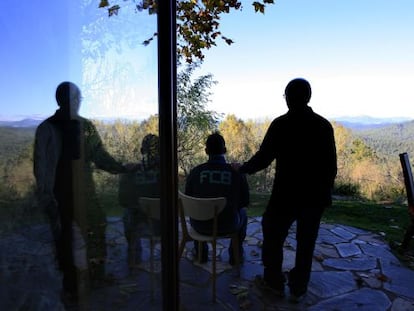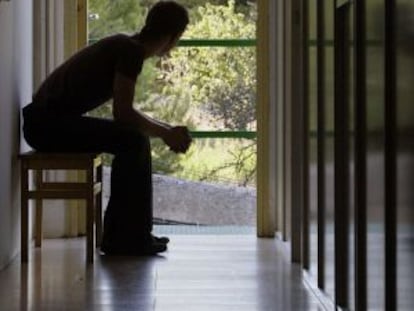The mysterious power of ayahuasca
Research into the therapeutic uses of this Amazonian brew is making strong progress

Jaume V. was already in his late forties when he began using cocaine paste, a particularly addictive and destructive version of the drug. His business had gone under, his wife had left him, and the problems were mounting up. He fell in with the wrong crowd, and his life spiraled out of control.
Giovanna Valls, now in her early fifties, went from sniffing a line of heroin at an upscale party in Paris to being slumped on the streets of a Barcelona slum while another addict injected her. During her rapid decline she survived by shoplifting, and along the way contracted the HIV virus, as well as tuberculosis and hepatitis.
A single dose of ayahuasca produced an improvement in depression patients within a couple of hours, and that lasted for 21 days
But in 2004, when both should have been near dead, the pair met in a small community in Brazil’s Amazon basin near the Mapiá river. After years trying to kick their respective habits, they had signed up for an experimental treatment using ayahuasca, a concoction made from the Banisteriopsis caapi vine and plants containing dimethyltryptamine (DMT). Over the next eight months they were administered the brew in a controlled environment with local people and other patients from Spain.
Today, Jaume and Giovanna – who is the sister of French Prime Minister Manuel Valls – are free from addiction, although they periodically take ayahuasca, which induces hallucinations.
Ayahuasca is believed to uncover information and memories hidden deep in the unconscious, and accesses areas of the brain that have been proven in some cases to help with treating addiction, depression and post-traumatic stress disorder. Recent research, some of it carried out in Spain, where its legal status is unclear, has led scientists to look further into its properties and possible uses.

Josep María Fábregas, a psychiatrist and expert in addition who is also the director of the Barcelona-based Center for Addiction Research and Treatment (CITA), first came across ayahuasca more than two decades ago during a visit to the Amazon. He later published ground-breaking studies in journals such as Drug and Alcohol Dependence about its therapeutic properties.
“We’ve never used this substance at our clinic,” he says. “But my work in the Amazon has shown me that it has worked where other, conventional, treatments have failed. So we began exploring how it might be used in therapy. The results were encouraging and we ended up creating a structure to be able to harness its capabilities.”
This led to the creation of the Institute for Applied Amazonian Ethnopsychology (IDEAA), a clinic in the Amazon basin where around 150 patients have received therapy based on ayahuasca. “It was the tool I was looking for after so many clinics and detox treatments,” says Valls. “It opened my brain and allowed me to see myself and to begin with forgiveness.”
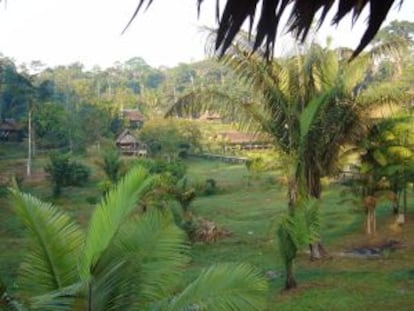
The results from the trials were “very encouraging,” says Fábregas. “We’ve been using drugs in psychiatry for more than 60 years. Prozac has been on the market for 40 years, valium for 60… We continue treating the symptoms, rather than looking at the root of the problem. These visionary substances could be an option to help with that approach. Today more and more countries are looking at using these techniques for therapeutic purposes.”
But there are no figures on exactly how many people ayahuasca has helped. Jaume Vidal says that 14 of the 16 people who lived with him for three months a decade ago have returned to normal life (of the other two, one died and the other disappeared, he says).
Jordi Riba, a pharmacologist and head of the neuropsychopharmacology unit at the Sant Pau hospital in Barcelona, has been investigating ayahuasca for 20 years and took part in a survey in Brazil that used it to treat depression. Conventional drugs take at least two or three weeks to begin working, while a single dose of ayahuasca produced an improvement in patients within a couple of hours, and that lasted for 21 days. Since then, it has been tested on patients suffering from severe stress.
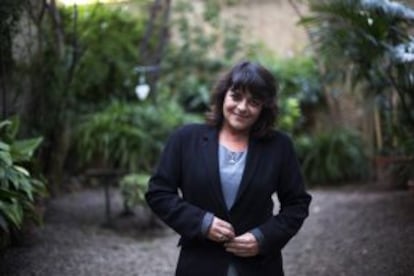
Ayahuasca seems to work through the interaction of its principal alkaloid with proteins found in some neurons. This activates areas of the brain between our emotional and cognitive regions, allowing patients to recover memories and see them more objectively. “We have seen images of the activation of the brain’s frontal cortex, the amygdala and the hippocampus,” says Riba. “These areas process our emotions, memories, and the interrelation between emotional and cognitive information. We could see on our scanners that there was an increase in information transfer.”
Riba warns against taking the drug for recreational purposes and without expert supervision. There have been a number of reports in the media of deaths associated with people using the substance unsupervised.
France is so far the only country to have banned ayahuasca. In Spain, as in many other places, it remains in legal limbo, though the police have arrested around 40 people since 2009. However, only one case resulted in a successful prosecution and the defendant was not sent to prison.
Ayahuasca has become fashionable, particularly in Catalonia, where so-called ceremonies are held attended by people looking for spiritual enlightenment. A guide is usually present to oversee the ritual, helped by assistants. The effects of the drug typically last around six hours.
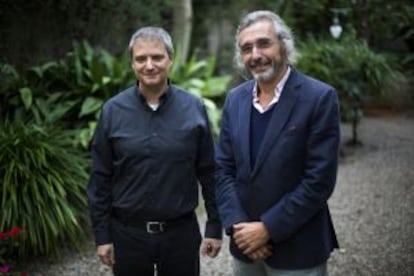
Benjamin De Loenen is the executive director of ICEERS, a foundation that funds research into plants with psychotropic qualities and their therapeutic uses. “Ayahuasca has been used in Spain for around 25 years. But it has become increasingly well-known. Growing numbers of people are interested in heightening their self-awareness by attending these ceremonies. But these are always private gatherings, by invitation only, and there is no money involved,” he says.
Meanwhile, the scientific community is becoming increasingly interested in ayahuasca, and how this ancient Amazonian brew could play a role in curing many of Europe’s malaises.
Tu suscripción se está usando en otro dispositivo
¿Quieres añadir otro usuario a tu suscripción?
Si continúas leyendo en este dispositivo, no se podrá leer en el otro.
FlechaTu suscripción se está usando en otro dispositivo y solo puedes acceder a EL PAÍS desde un dispositivo a la vez.
Si quieres compartir tu cuenta, cambia tu suscripción a la modalidad Premium, así podrás añadir otro usuario. Cada uno accederá con su propia cuenta de email, lo que os permitirá personalizar vuestra experiencia en EL PAÍS.
¿Tienes una suscripción de empresa? Accede aquí para contratar más cuentas.
En el caso de no saber quién está usando tu cuenta, te recomendamos cambiar tu contraseña aquí.
Si decides continuar compartiendo tu cuenta, este mensaje se mostrará en tu dispositivo y en el de la otra persona que está usando tu cuenta de forma indefinida, afectando a tu experiencia de lectura. Puedes consultar aquí los términos y condiciones de la suscripción digital.
More information
Últimas noticias
Half of Scotland is in the hands of 420 property owners
Reinhard Genzel, Nobel laureate in physics: ‘One-minute videos will never give you the truth’
Pinochet’s victims grapple with José Antonio Kast’s rise in Chile
From digital curfews to blocking apps: How technology experts protect their children online
Most viewed
- Pablo Escobar’s hippos: A serious environmental problem, 40 years on
- Reinhard Genzel, Nobel laureate in physics: ‘One-minute videos will never give you the truth’
- Why we lost the habit of sleeping in two segments and how that changed our sense of time
- Charles Dubouloz, mountaineering star, retires at 36 with a farewell tour inspired by Walter Bonatti
- The Florida Keys tourist paradise is besieged by immigration agents: ‘We’ve never seen anything like this’

